Primrose officinalis: description, collection, properties and application
The main use of the medicinal primrose comes from its name, that is, it is used in treatment. The list is so long that it is included in a separate chapter. However, young leaves can be used for making salads, borscht, soups. In European countries, medicinal primrose is grown as a salad culture. From primrose flowers, a dye is obtained for olive-colored fabrics.
Content:
- Description of the plant
- Collecting and harvesting a plant
- Useful properties of primrose
- Primrose composition
- Application in medicine
Description of the plant
Primrose officinalis Is a perennial herb belonging to the primroses family. Its height can reach 30 cm, and underground it has a bunch of thin roots with a brown rhizome.
The stem is erect, the flowers are collected in an umbrella inflorescence, have a golden yellow color with dark spots on the pharynx. A pleasant mint aroma emanates from the flowers, flowering occurs from April to June, and the fruits can be harvested in July.
The plant can be propagated in different ways: by cuttings, dividing bushes and seeds.
Every year the plant becomes less and less frequent, it is not included in the Red Book, nevertheless, already now it needs rational use and preventive protection. The main habitat is in dry fields and meadows, along river banks, in bushy thickets and among mixed and deciduous forests.
Other names that can be heard are:
- Medyanik
- Jaundice
- Golden Keys
- God's hands
- Lamb
- Baranetsy
- Large-cup primrose
- Primrose officinalis
The plant is widespread in the forests and forest-steppe of Russia and Ukraine. In scientific medicine, not only leaves and flowers are used, but also rhizomes with roots.
The collection is carried out at the beginning of flowering.
The flower is also very popular in folk beliefs. For example, the girl who is the first to find a primrose on Easter will be the first to marry, and certainly this year. But in England, it is believed that gnomes and fairies hide in the primrose from bad weather.
Collecting and harvesting a plant
Collect the plant as soon as they begin to bloom, doing it with your hands. Half of the leaves are torn off, half are left intact, you should be careful not to interfere with fruiting and flowering.
It is better not to wait for the natural drying of flowers, but to do it in special dryers or ovens with temperatures up to 120 degrees. Such drying allows you to save more vitamins, but you also need to use the leaves as quickly as possible, since after a year they will lose their healing properties.
At the beginning of autumn, the harvesting of roots with rhizomes takes place, when the primrose begins to wither.
This can be done in early spring, when the leaves have not yet opened. The work consists in the fact that the roots are dug out, cleared of the ground and cut off with a sharp knife from the top. They should be rinsed immediately with cold water and dried in the fresh air. The next step is drying in an oven or dryer at a temperature of up to 60 degrees, in the case of roots, natural drying can also be ensured, but a well-ventilated room must be chosen.
The plant has a pleasant aroma, somewhat reminiscent of the smell of violets with a slightly bitter tinge.
Such raw materials from rhizomes can be stored for up to 3 years, but today they are no longer so in demand in folk medicine, since many similar saponin-bearing plants have appeared that have the same effect.
As for the flowers, they are harvested from April to May, the blanks are made without cups.
When the flowers are dry in the fresh air, they will have a subtle, sweet scent. You can use them throughout the year, then the beneficial properties will disappear. If the flowers are properly dried, they will look like open yellow corollas.
Any of the above raw materials can be stored in multi-layer paper, canvas bags are also used. A prerequisite is the presence of good ventilation in the room.
Useful properties of primrose
The main action for which the medicinal primrose is famous is an expectorant.
It contains galenic preparations that increase the activity of the mucous membrane of the bronchi and respiratory tract, secretion increases. In addition, the activity of the epithelium increases and thus expectoration is achieved. The largest concentration of the substance is found in the roots of the primrose.
It is possible to use the infusion from the roots for any diseases of the respiratory tract. To increase the beneficial properties of the broth and diversify the taste, you can add calendula, chamomile, anise or angelica.
Primrose officinalis can be used:
- As a laxative and pain reliever.
- With paralysis and convulsions.
- For insomnia.
- With general weakness.
- With decreased appetite.
- With dizziness.
- Diseases of the kidneys and ureters.
- For bruises, compresses from the plant are used.
- From the upper part of the plant, that is, from the leaves, decoctions are prepared for the treatment of eczema of the head.
- Juice is squeezed out with bleeding gums, with scurvy.
- Taking a decoction of primrose improves vision, normalizes digestion, helps to overcome influenza and sore throat, pillinosis, enhances immunity and fights vitamin deficiency.
- Flowers are also used for respiratory diseases, as a diaphoretic.
- They help to normalize the mental state in case of hysteria and paralysis.
- Fight against dizziness and migraines, diseases of the genitourinary system, rheumatism.
- Primrose flower juice is used for colds, insomnia, heart disease, paralysis, malaria, whooping cough, and lung diseases.
You can see that the medicinal primrose has a very wide spectrum of action.
Summing up, we can highlight all the main properties of the primrose:
- Expectorant.
- Pain reliever.
- Wound healing.
- Calming.
- Toning.
- Sedative.
- Vitamin.
- Fortifying.
- Antispasmodic.
- Diaphoretic.
- Diuretic.
Primrose composition
The most important thing is that contains primrose Is vitamin C. Thanks to it:
- strengthens the immune system
- improves the absorption of iron
- the work of the endocrine glands is stimulated
- free radicals are neutralized
- cholesterol is removed
- the work of hematopoiesis is normalized
- blood vessels are cleaned
- wounds heal faster
- strengthens the immune system.
Several leaves of primrose contain the daily requirement of vitamin C.
The next useful component is carotene. Thanks to him:
- improves skin condition and vision
- increased resistance to infections
- hormones and the work of the nervous system are regulated
- normal bone growth is ensured.
Vitamin E is essential for:
- resorption of blood clots and prevention of their formation
- improvement of the reproductive system
- relief of menopause
- early wound healing
- prevention of the formation of rough scars.
Primrose also contains manganese salts. They are needed for:
- bone and connective tissue formation
- to normalize lipid metabolism
- removing cholesterol
- transformation of carbohydrates
- normalization of the nervous system
- regulation of the thyroid gland.
Another component that is of great importance is saponins. They are necessary for:
- the formation of mucus in the lungs and its lightest expectoration
- relieve inflammation
- preventing the proliferation of tumor cells
- enhancing the work of hormones
- regulation of water-salt and mineral balance in the body.
How will the flavonoids and glycosides contained in medicinal primrose be useful? These components strengthen blood vessels, protect the body from microorganisms, neutralize toxins and free radicals, eliminate edema, remove cholesterol, normalize digestion, reduce allergic reactions, increase the overall tone of the body, soothe the nervous system, reduce heart rate, normalize blood circulation, and lower blood pressure.
Application in medicine
It is worth considering that treatment with primrose is not suitable for everyone. Some people may have an unpredictable reaction associated with a high sensitivity to the drug. Itching, burning, redness, blisters on the skin, inflammation of the mucous membranes may appear. In other cases, medicinal primrose helps to fight many diseases.
There are many recipes using primrose officinalis.
- The first is as follows: 1 tbsp. the roots and rhizomes of the primrose pour a glass of boiling water, put in a water bath for 30 minutes. After 30 minutes, the broth can be filtered and diluted with water to the original volume. It should be used up to 4 times a day before meals.
- The second recipe boils down to the following: pour 20 roots and rhizomes with two glasses of boiling water, leave for half an hour, strain. Take half a glass up to 4 times a day.
- From the leaves of the primrose, you can make the following infusion: pour 10 g of dry ground leaves with a glass of boiling water, filter after an hour. You need to take 1 tbsp. up to 4 times a day.
- You can make an infusion of flowers: pour 25 g of dried flowers with a glass of boiling water, set for 30 minutes, strain. Take half a glass 2 times a day.
- You can also drink juice, squeeze juice from the aerial part of the plants and take 0.25 cups in this form, eating with a spoon of honey three times a day. If you squeeze the juice only from the flowers, then you can drink it for 1 tsp, also snacking on honey and drinking water or milk.
Primrose medicinal is widespread in our area. Since it belongs to those plants that need to be protected, it can be cultivated in artificial conditions, because not many plants bring such great benefits to the body as the primrose.
More information can be found in the video.



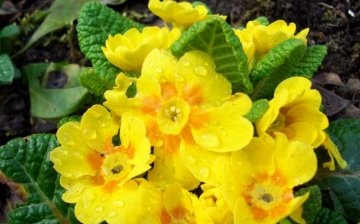
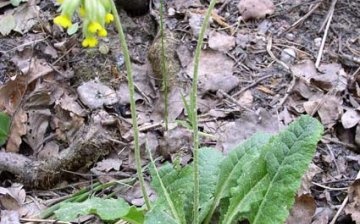
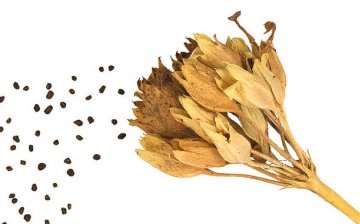

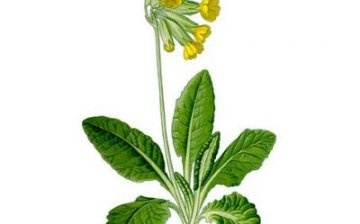
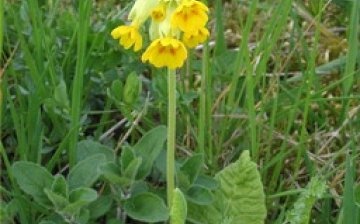






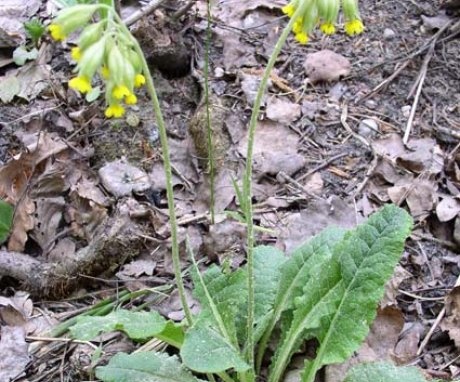

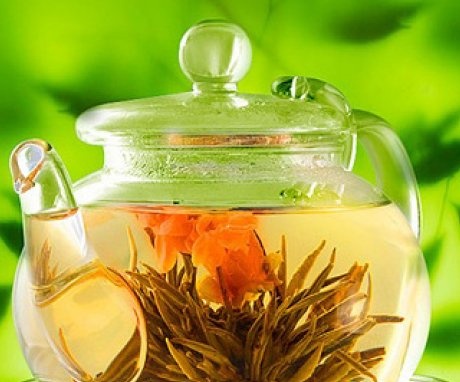
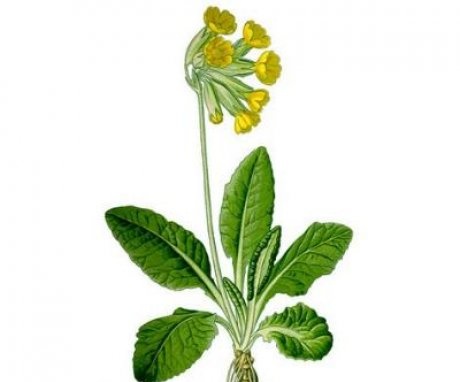
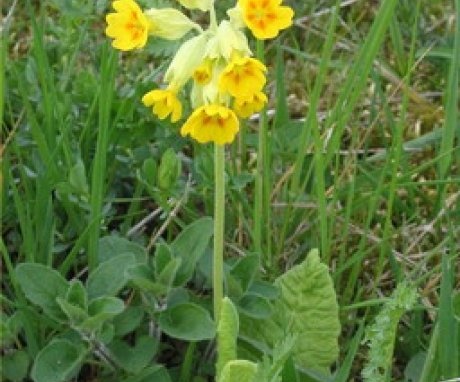
Nice little flowers - this primrose. In the spring, after the slush, it is so nice to look at them and at the mother-and-stepmother - the heart rejoices.